
A look at the Hub’s place in rock ’n’ roll
history
by Josh B. Wardrop
Ever since the Pilgrims landed the Mayflower in Plymouth, Bostonians have had an association with rock. However, whereas the Pilgrims would no doubt have found turning the amps up to 11 entirely too sinful, Boston music lovers have been embracing the mohawked, the tattooed, the guitar heroes ever since the days of Elvis Presley—and in the process, the Hub has turned out some of the most enduring rock ’n’ roll acts of all time.
 Boston wasn’t at the epicenter of the
early rock ’n’ roll explosions the way
cities like Detroit, New York and Memphis
were, but there were occasional successes
that hailed from the Hub—like
Little Joe Cook,
who scored a Top 30 hit on the Billboard
charts with “Peanuts” in 1957, appeared on
“American Bandstand,” and toured the nation
with acts like B.B. King and Screamin’ Jay
Hawkins. (As recently as this past June, the
83-year-old Cook could still be seen
performing his infectious, danceable soul
music twice a week at Cambridge’s Cantab
Lounge.)
Boston wasn’t at the epicenter of the
early rock ’n’ roll explosions the way
cities like Detroit, New York and Memphis
were, but there were occasional successes
that hailed from the Hub—like
Little Joe Cook,
who scored a Top 30 hit on the Billboard
charts with “Peanuts” in 1957, appeared on
“American Bandstand,” and toured the nation
with acts like B.B. King and Screamin’ Jay
Hawkins. (As recently as this past June, the
83-year-old Cook could still be seen
performing his infectious, danceable soul
music twice a week at Cambridge’s Cantab
Lounge.)
In the 1960s, it was The Fab Four that gave another Boston act—Barry and the Remains—their big break. The group had scored a couple of hit singles in 1965 and appeared on Ed Sullivan’s Christmas Show, but their fame reached a new level when they were picked to open for The Beatles during a 1966 U.S. tour. The Remains’ star burned out quickly, though—by the time their one and only album was released at the tour’s end, they had already disbanded.
The late 1960s saw the arrival of psychedelic sounds and a key Boston music venue—the Boston Tea Party—which first opened in 1967. Originally, it was the stomping grounds of far out and groovy local bands like The Lost, The Beacon Street Union and The Hallucinations (who featured one member—Peter Wolf—who’d go on to even greater success in the next decade). Eventually, the Tea Party became the place where Boston rock fans would catch “up-and-coming” out-of-town acts like Fleetwood Mac, The Velvet Underground, Led Zeppelin, Rod Stewart, Van Morrison and many, many others.
By 1970, though, the Tea Party was gone and the music business was changing. For many ’60s musicians, the move from peace and love to the “Me Decade” would be catastrophic, but the arrival of the ’70s seemed to usher in the Golden Age of Boston rock, with the Hub producing a number of legendary acts during those years.
Peter Wolf joined the band he’s most associated with—The J. Geils Band—at the end of the ’60s, and in the ’70s, their high-energy live shows and blues roots produced big hits like “Lookin’ For a Love” and “Must Of Got Lost.” At the same time, five musicians from New Hampshire and Massachusetts united over their love of the harmonies of The Beatles and the lascivious honky-tonk of the Stones. When their collective influences met with the frenzied ya-ka-ka-ka-ka! of lead singer Steven Tyler in a dingy Commonwealth Ave. apartment, Aerosmith was born.
More bands followed as the ’70s rolled on, many achieving huge commercial success. Groups like The Cars and The Modern Lovers were at the vanguard of the New Wave movement of the late ’70s, while Wellesley native Billy Squier hit it big with rock anthems like “The Stroke” and “Lonely is the Night” and the MIT-bred arena rock legends Boston scored the best-selling debut album ever (a record that would stand for more than a decade), packing stadiums worldwide.
There was also a new Ground Zero for live performance in Boston at that time. Deep below freaky-funky Kenmore Square, the Rathskellar (or, as everyone called it, “The Rat”) was a dingy subterranean dive bar that would appeal to the ever-burgeoning punk movement, and that hosted shows by everyone from Talking Heads and Tom Petty to Thin Lizzy and The Ramones. Everybody played there—and would continue to do so until the club finally closed its doors in 1997 amid a movement toward gentrification.
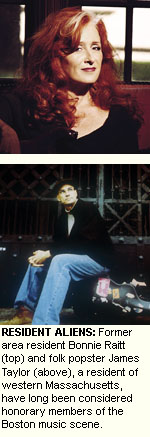 The 1980s are remembered as a shiny,
poppy time for rock music, largely consumed
by artifice and shimmering, synthesized
glamour—but the Boston rock scene couldn’t
have reflected that less. Embracing its
status as a college town more than ever, the
bands that emerged from Boston in the Reagan
years were the precursors of what became
known as “indie rock”—producing songs with
harder edges, thoughtful (if sometimes
impenetrable) lyrics and a healthy degree of
cynicism and disassociation from material
concerns. Acts like The
Pixies, The
Lemonheads,
Aimee Mann’s early band
’til Tuesday,
Mission of Burma,
Dinosaur Jr.,
Buffalo Tom and
Juliana Hatfield
helped establish Boston as a bonafide
birthplace of the “alternative rock” sound.
The 1980s are remembered as a shiny,
poppy time for rock music, largely consumed
by artifice and shimmering, synthesized
glamour—but the Boston rock scene couldn’t
have reflected that less. Embracing its
status as a college town more than ever, the
bands that emerged from Boston in the Reagan
years were the precursors of what became
known as “indie rock”—producing songs with
harder edges, thoughtful (if sometimes
impenetrable) lyrics and a healthy degree of
cynicism and disassociation from material
concerns. Acts like The
Pixies, The
Lemonheads,
Aimee Mann’s early band
’til Tuesday,
Mission of Burma,
Dinosaur Jr.,
Buffalo Tom and
Juliana Hatfield
helped establish Boston as a bonafide
birthplace of the “alternative rock” sound.
The big bands that emerged from Boston during the 1990s were arguably a mixed bag. During the hair metal days of 1991 and 1992, the quartet Extreme had a huge hit with the prom ballad “More Than Words.” But around the time when grunge legends Nirvana played their first East Coast show at Green Street Station in Jamaica Plain, the stage was set for singer Kay Hanley and her group Letters to Cleo, who offered their upbeat take on indie pop, and groups like The Mighty Mighty Bosstones and Dropkick Murphys who enjoyed a significantly wider audience than their predecessors. By the end of the decade, acts like Godsmack and Western Massachusetts hitmakers Staind were able to benefit from hard rock’s now-solid footing in popular music.
Over the years, some artists have practically become “Boston musicians” by association. Whether it’s Bonnie Raitt (who, like Van Morrison, resided in Cambridge for several years), or James Taylor (a native North Carolinian, but who settled here along with some of his musical siblings), to singers like John Mayer and Tracy Chapman (who attended college here— at Berklee College of Music and Tufts University, respectively) Hub music fans haven’t hesitated to bring them into the family.
And today, the beat goes on—with new
names like blue-collar rockers
Damone, smart and
melodic popsters Guster
and artsy cabaret duo The
Dresden Dolls representing the
latest Boston-area bands to garner
nationwide attention. With new bands popping
up every day, and a continually changing
young fanbase living in the city to support
them, Boston seems likely to keep the music
playing for a long time to come.

back to homepage
|
WHO’S ROCKING BOSTON NOW?
For the folks whose annual concert going experience begins and ends with a trough of margaritas in the parking lot of the annual Jimmy Buffett concert, the end of summer pretty much means the end of rock concert season. However, in Boston, the arrival of a small nation’s worth of college students tends to make the Hub a desirable touring spot for lots of big names even once the leaves change.
TDBANKNORTH GARDEN: Longtime Boston music fans still tell stories about legendary shows at the old Boston Garden—from waiting until 1 a.m. for a Rolling Stones show to start, to James Brown |
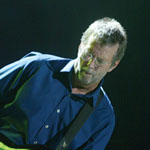 taking
the stage less than 24 hours after
the Martin Luther King assassination
in 1968. The new Garden hasn’t
secured such a place in rock history yet, but it does
still draw some of the biggest acts
in the world to Boston, including
the Red Hot Chili Peppers (October
2) and old Slowhand himself, Eric
Clapton (pictured) (October 3 & 4).
Refer to
listing. taking
the stage less than 24 hours after
the Martin Luther King assassination
in 1968. The new Garden hasn’t
secured such a place in rock history yet, but it does
still draw some of the biggest acts
in the world to Boston, including
the Red Hot Chili Peppers (October
2) and old Slowhand himself, Eric
Clapton (pictured) (October 3 & 4).
Refer to
listing.
|
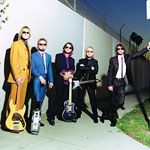 TWEETER CENTER: The
Tweet’s season officially ends
September 29 with the prog-metal
stylings of Maynard James Keenan and
his band, Tool. But it’s the
penultimate two-night stand
September 26 & 28 by Boston rock
legends Aerosmith (pictured), with
support from onetime drinking
buddies Mötley Crüe, that’s
sure to have local rock fans jumping
back in the saddle again. Refer to
TWEETER CENTER: The
Tweet’s season officially ends
September 29 with the prog-metal
stylings of Maynard James Keenan and
his band, Tool. But it’s the
penultimate two-night stand
September 26 & 28 by Boston rock
legends Aerosmith (pictured), with
support from onetime drinking
buddies Mötley Crüe, that’s
sure to have local rock fans jumping
back in the saddle again. Refer to
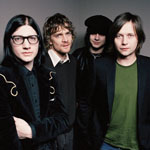 THE ORPHEUM: The Orpheum
tends to heat up as the weather gets
cooler, and this year is no
exception as it welcomes a host of
varied acts from Jack White’s new
band, The Raconteurs (pictured), on
September 29 to jazzy-pop Brit Jamie Cullum on
September 30 to trip-hop’s
Massive Attack on October 1.
Refer to
THE ORPHEUM: The Orpheum
tends to heat up as the weather gets
cooler, and this year is no
exception as it welcomes a host of
varied acts from Jack White’s new
band, The Raconteurs (pictured), on
September 29 to jazzy-pop Brit Jamie Cullum on
September 30 to trip-hop’s
Massive Attack on October 1.
Refer to
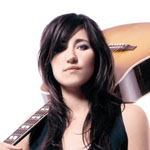 AGGANIS
ARENA: The new kid on the block,
this 7,200-seat concert arena at
Boston University brings in
everything from indie pop bands to
rock legends. Most imminently,
however, Agganis welcomes the annual
Mix 98.5 FM MixFest concert on
September 30, featuring Top 40 stars
like Rihanna, James Blunt,
KT Tunstall (pictured) and Natasha Bedingfield, while
October 6 sees
the first Boston visit in many a
moon by old-school metalheads Iron
Maiden. Refer to
AGGANIS
ARENA: The new kid on the block,
this 7,200-seat concert arena at
Boston University brings in
everything from indie pop bands to
rock legends. Most imminently,
however, Agganis welcomes the annual
Mix 98.5 FM MixFest concert on
September 30, featuring Top 40 stars
like Rihanna, James Blunt,
KT Tunstall (pictured) and Natasha Bedingfield, while
October 6 sees
the first Boston visit in many a
moon by old-school metalheads Iron
Maiden. Refer to
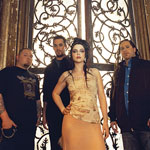 AVALON: On a weekend night, Avalon
becomes the city’s top dance club,
attracting internationally known DJs
and club kids of all denominations.
But it’s also a top venue for buzzworthy indie bands and rising
stars. In the next two weeks, music
lovers can check out shows by Clap
Your Hands Say Yeah (September 26),
Less Than Jake (October 5) and
multi-platinum goth-lite superstars
Evanescence (pictured) (October 7).
Refer to
AVALON: On a weekend night, Avalon
becomes the city’s top dance club,
attracting internationally known DJs
and club kids of all denominations.
But it’s also a top venue for buzzworthy indie bands and rising
stars. In the next two weeks, music
lovers can check out shows by Clap
Your Hands Say Yeah (September 26),
Less Than Jake (October 5) and
multi-platinum goth-lite superstars
Evanescence (pictured) (October 7).
Refer to